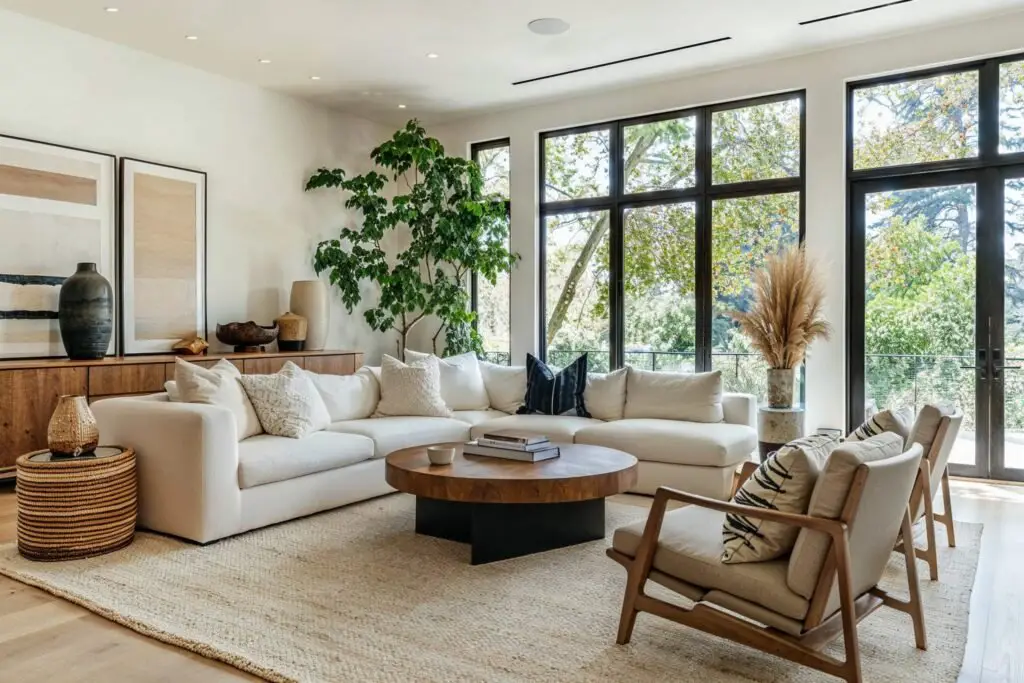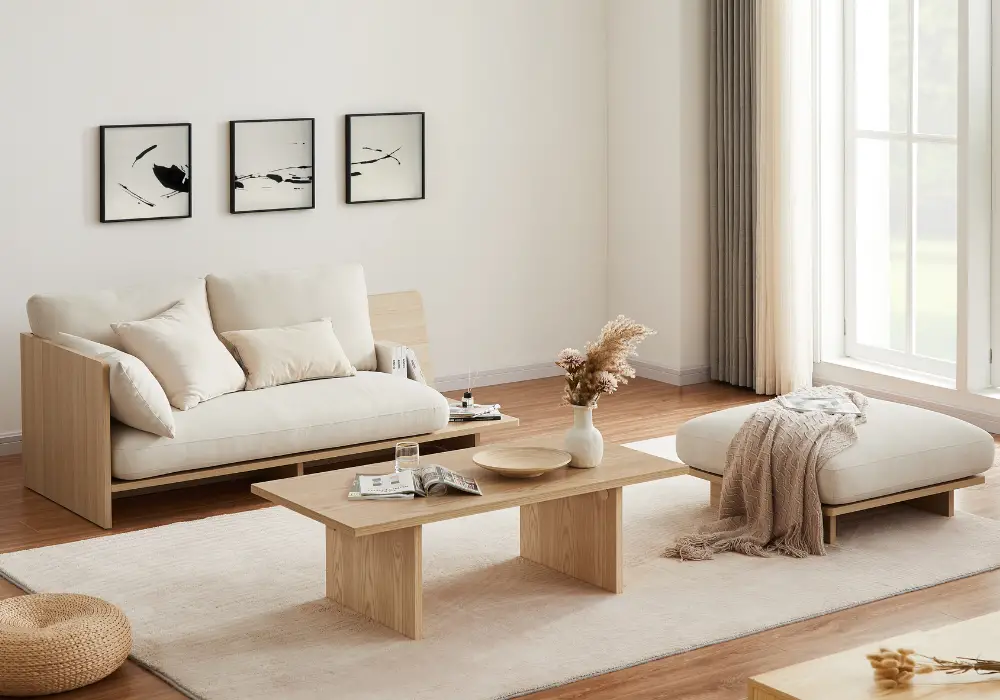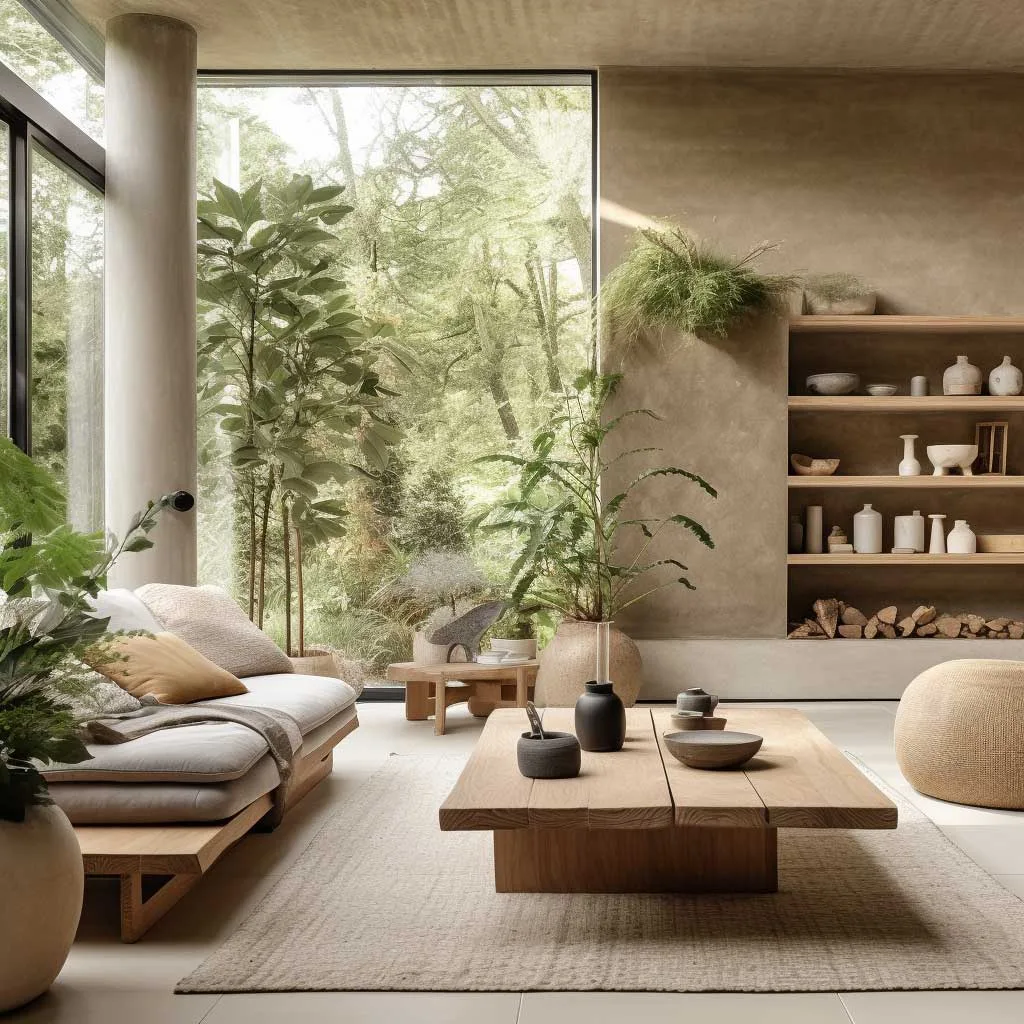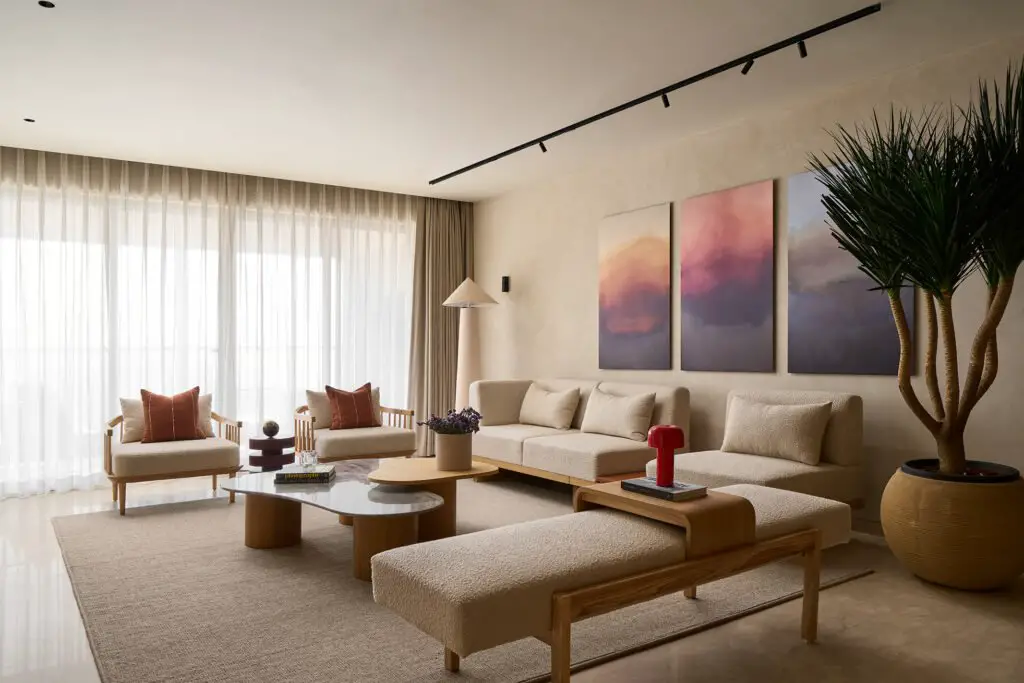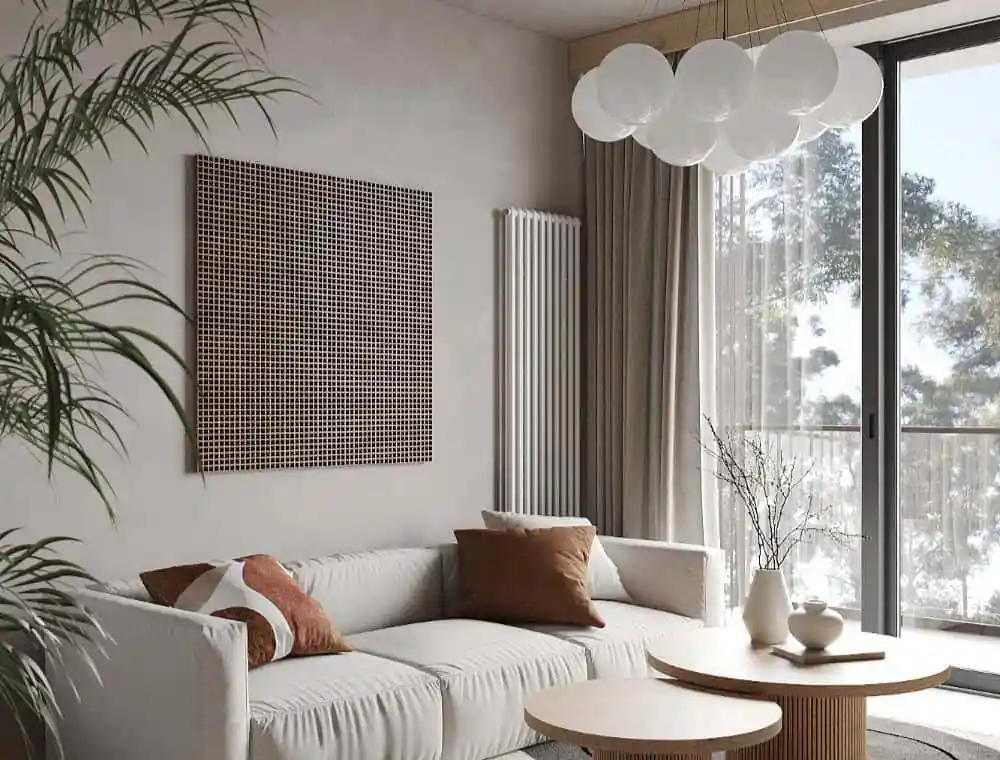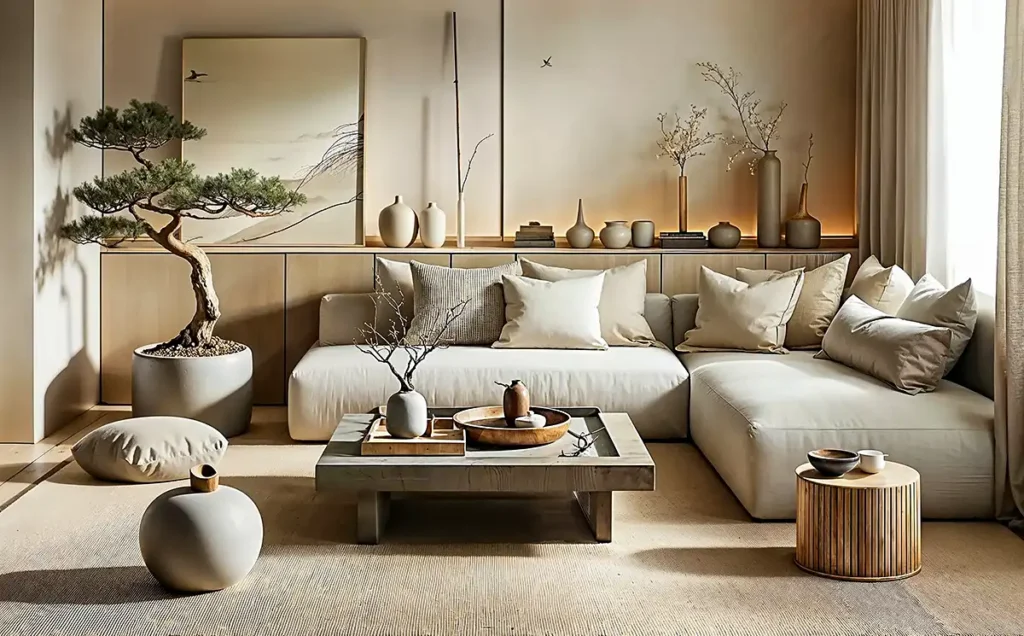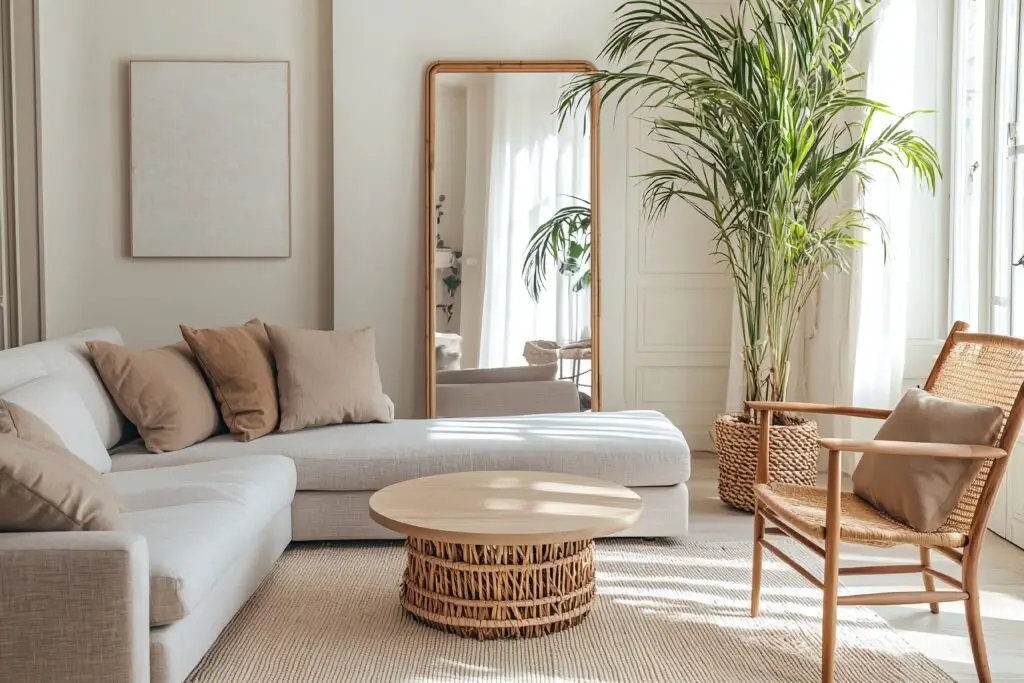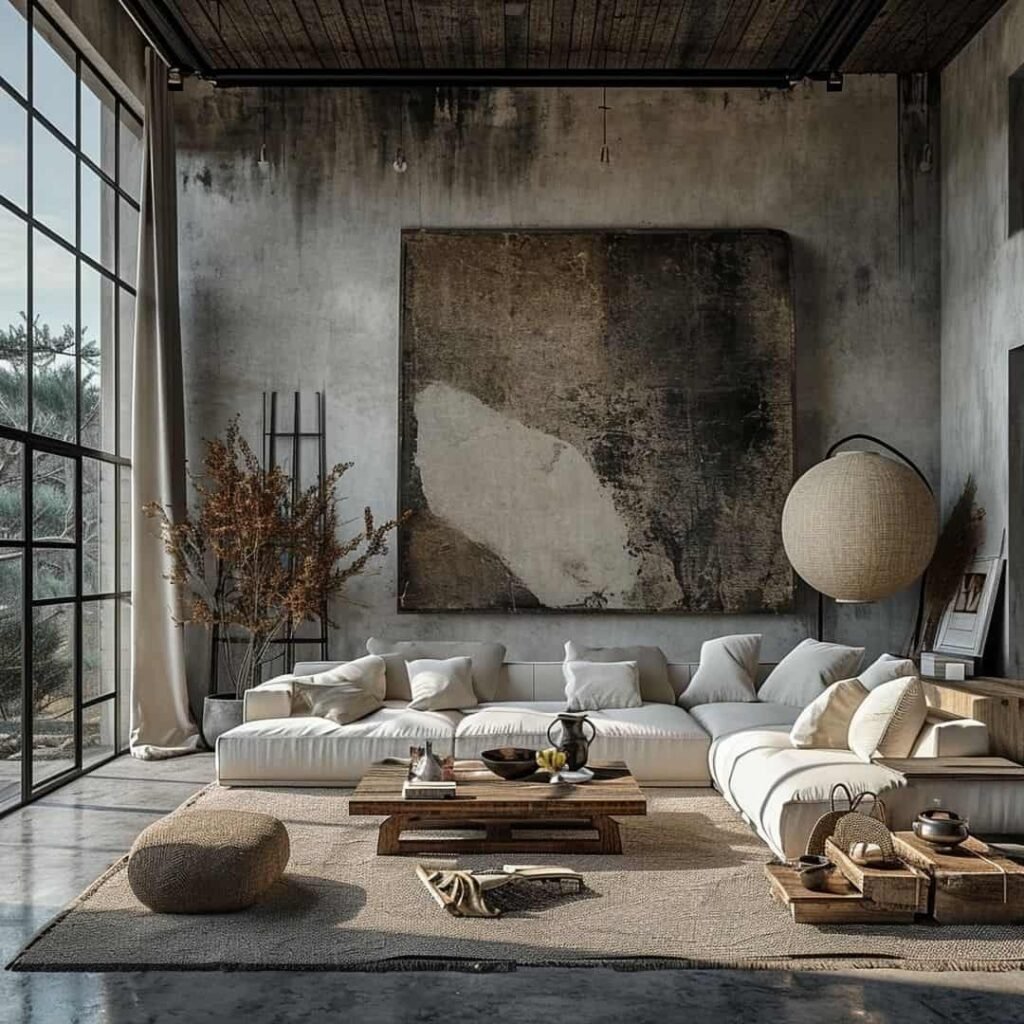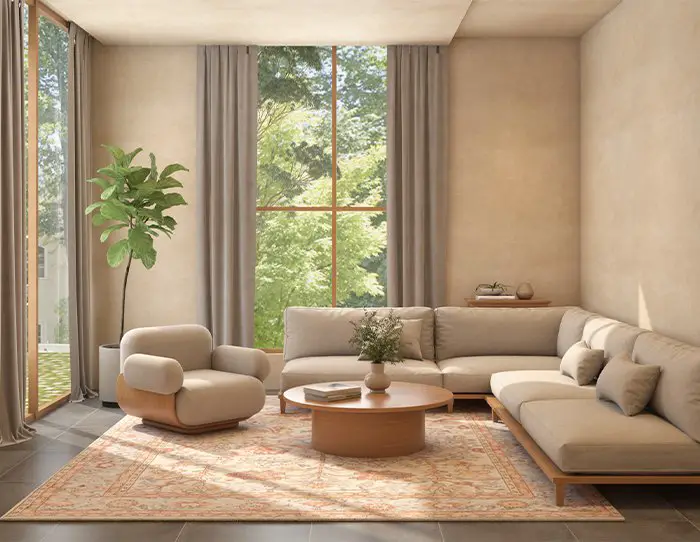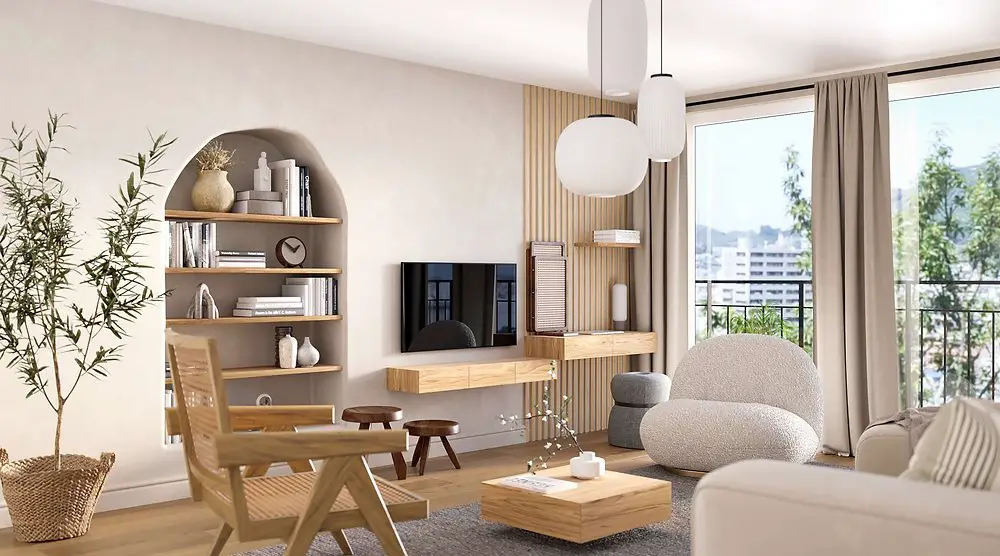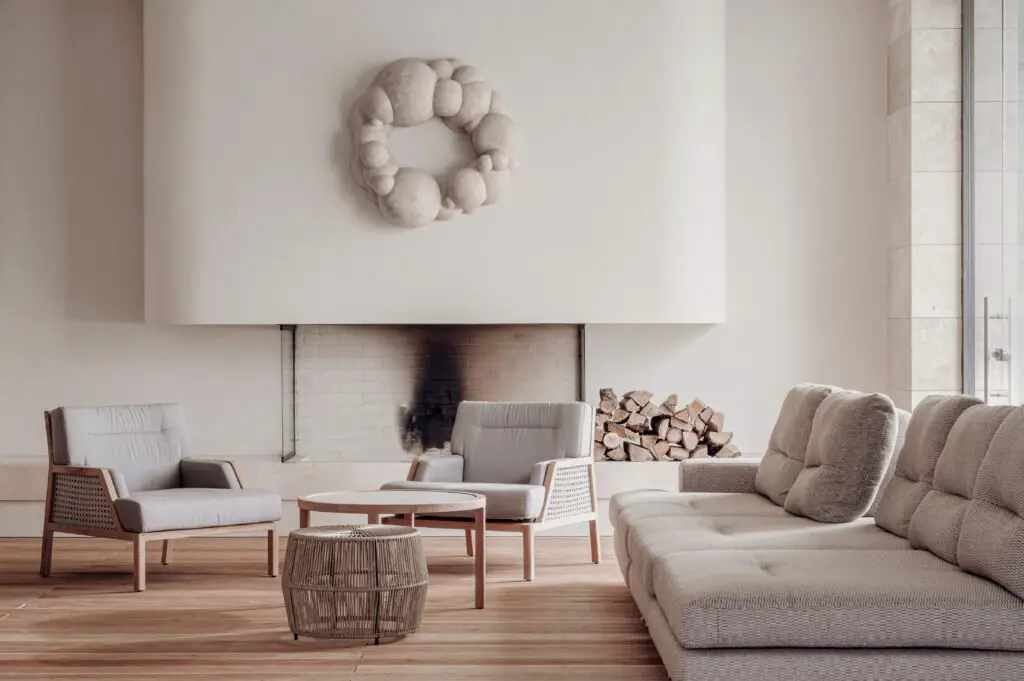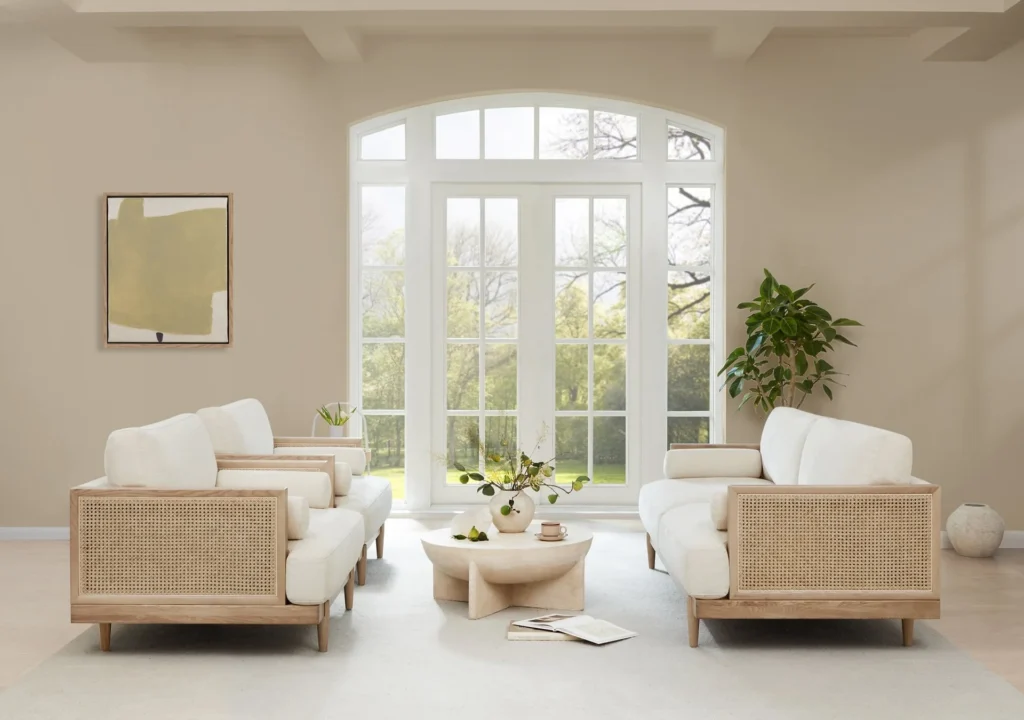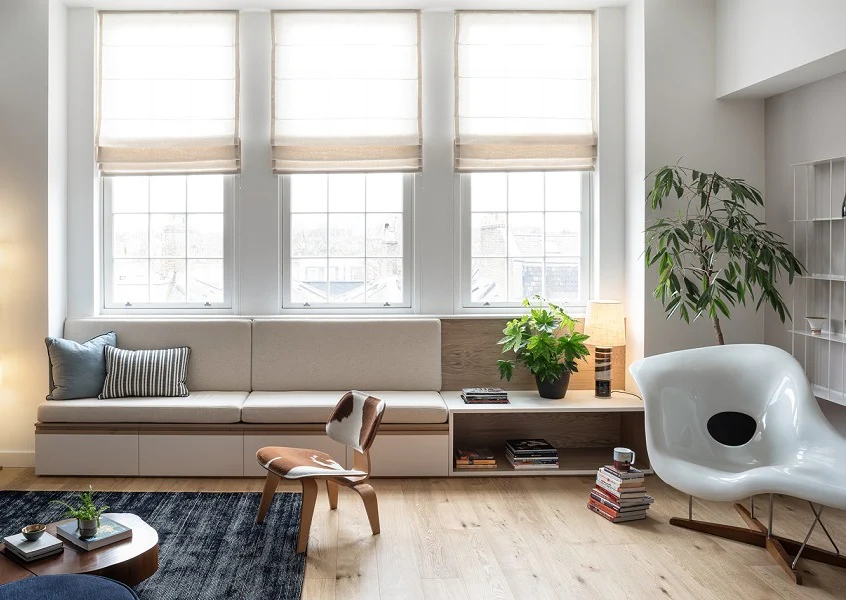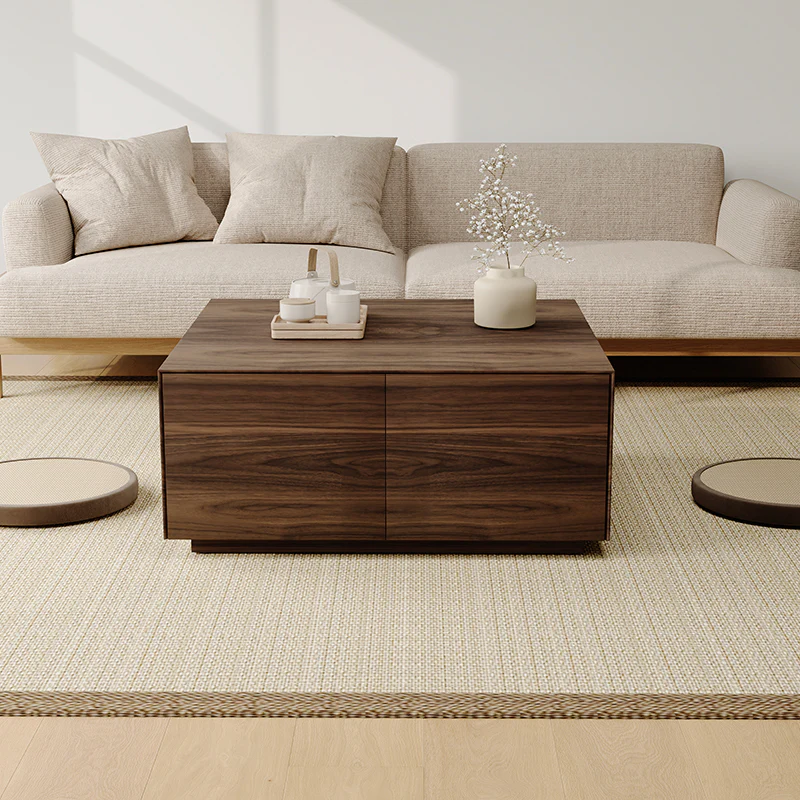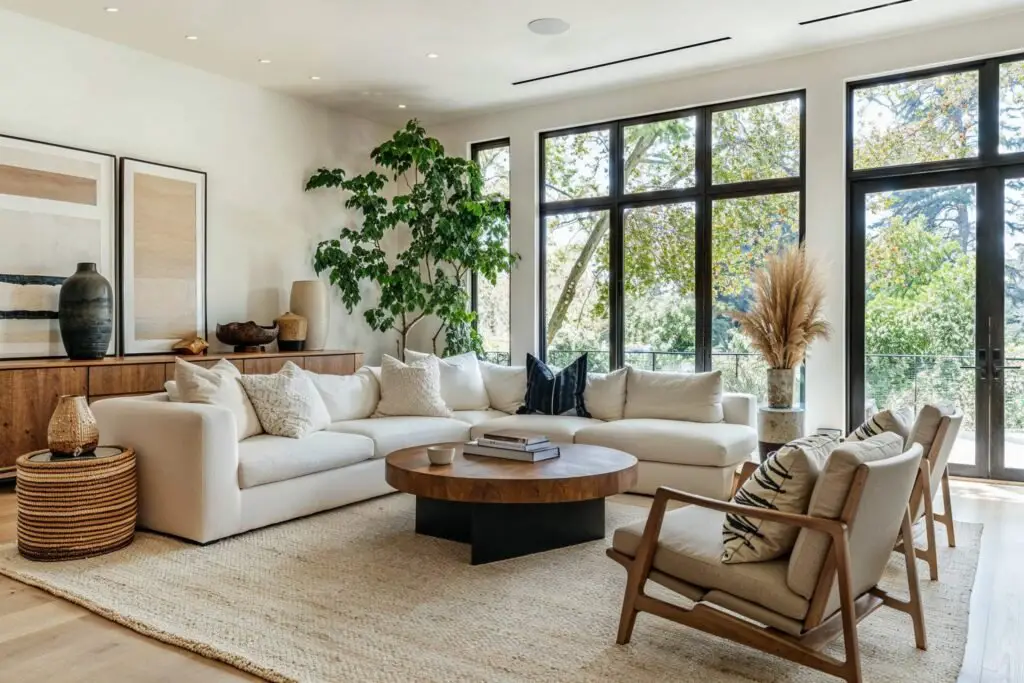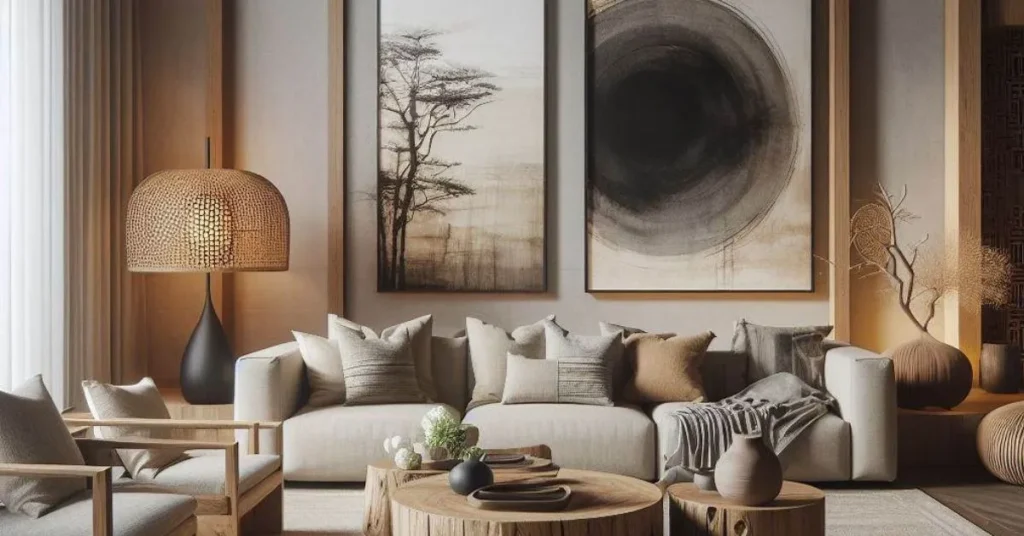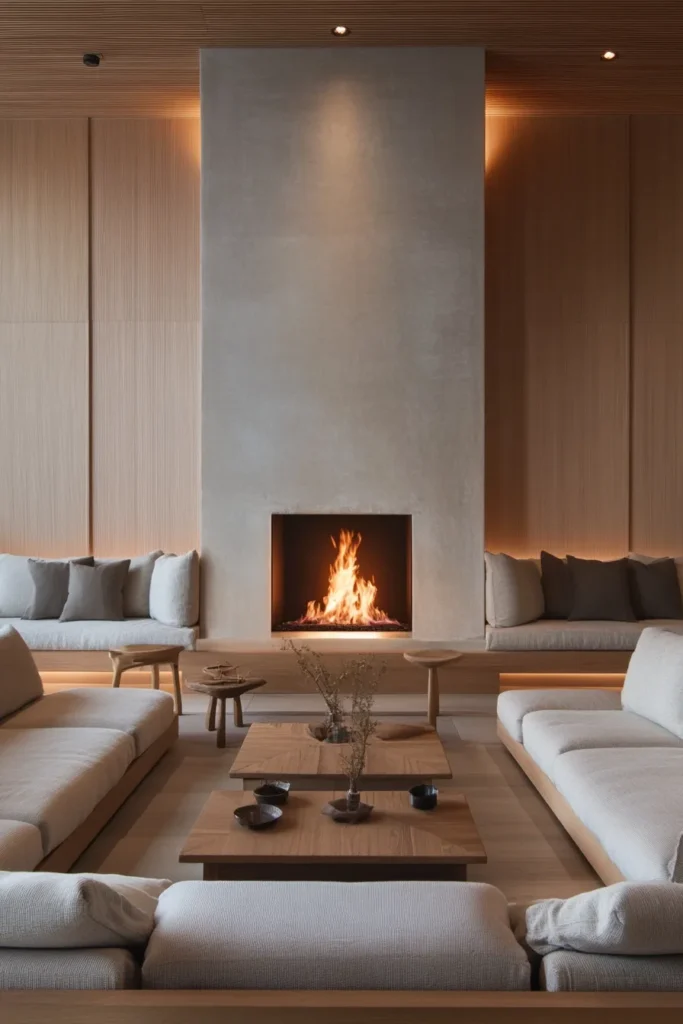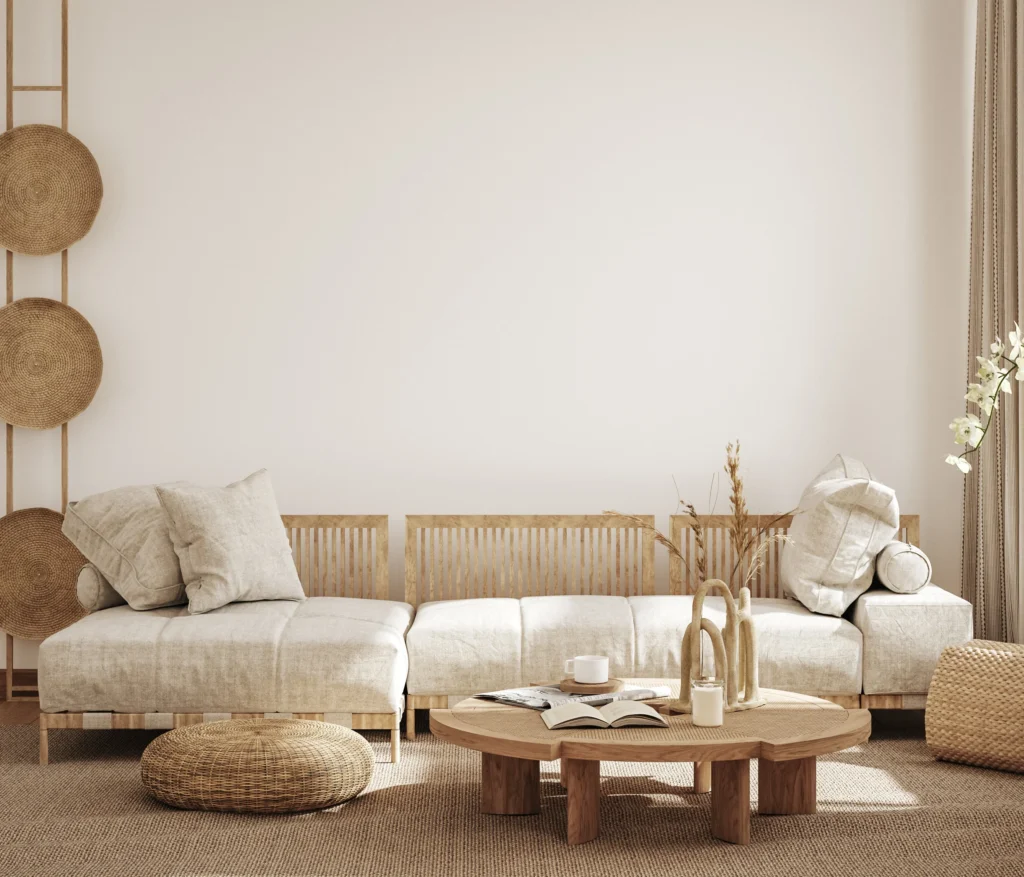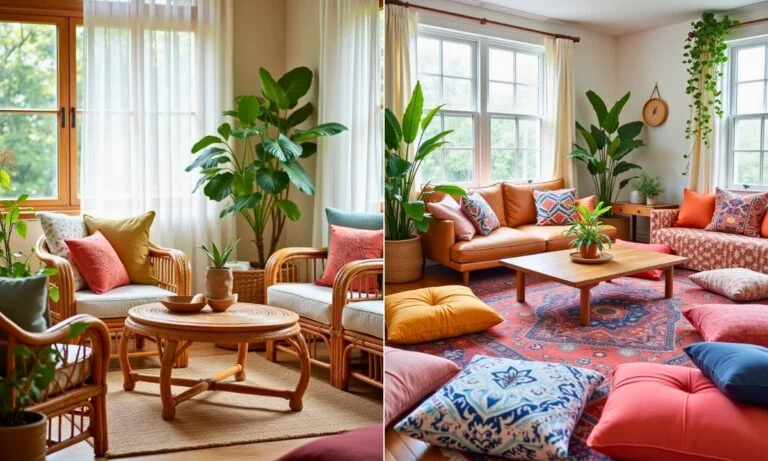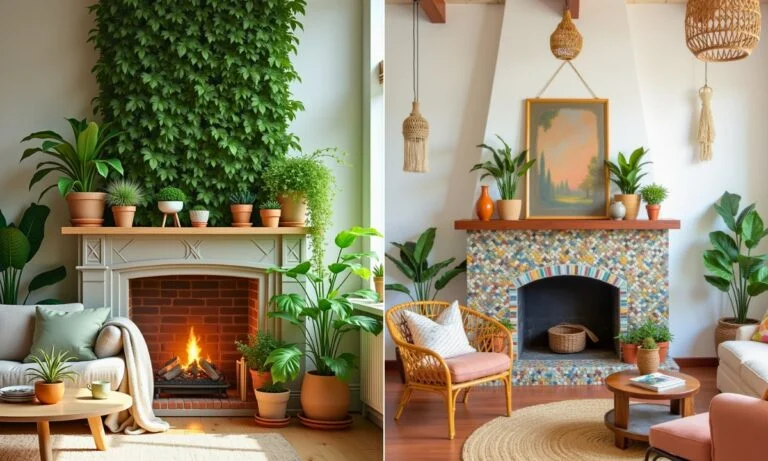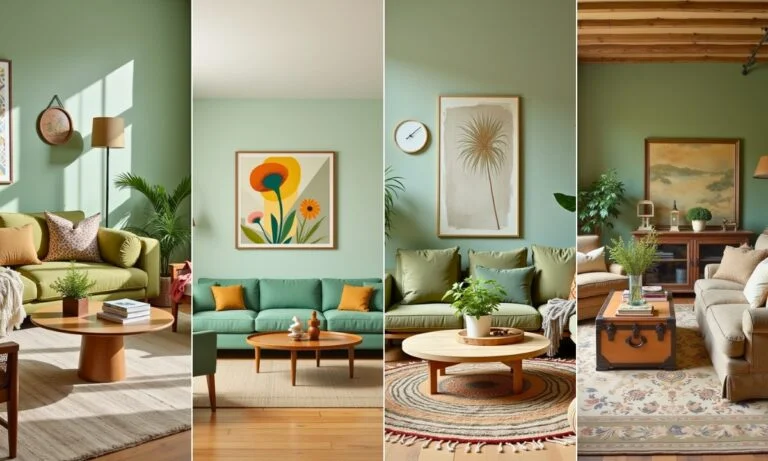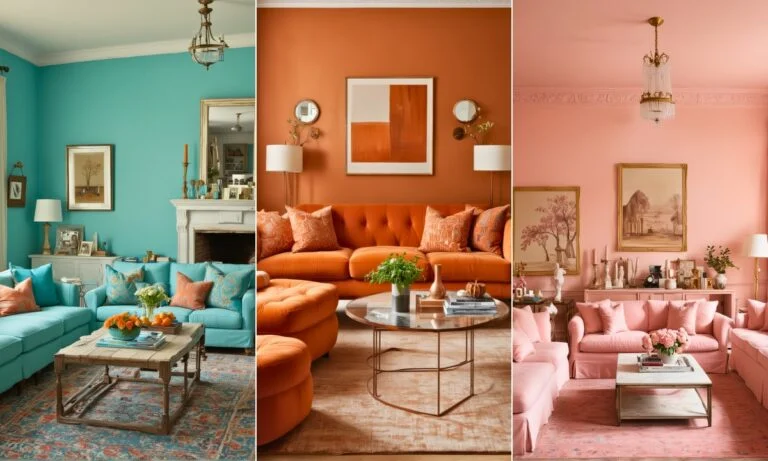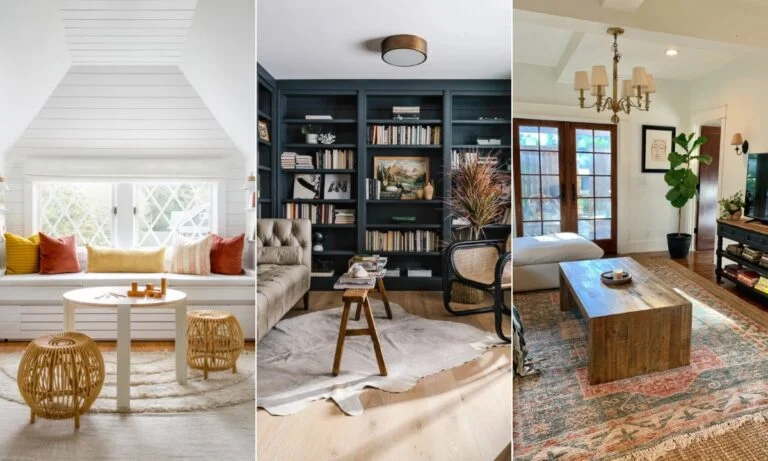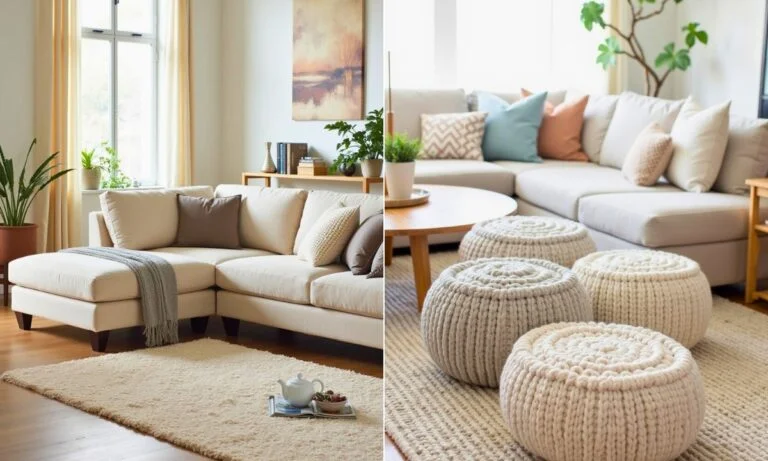26 Japandi Living Room Design
Japandi design is taking the interior world by storm, and for good reason.
This harmonious blend of Japanese and Scandinavian aesthetics creates a serene, functional, and effortlessly stylish living space.

By combining the minimalist elegance of Japanese interiors with the cozy warmth of Scandinavian design, Japandi offers a perfect balance of simplicity and comfort.
In this post, we’ve curated 26 stunning Japandi living room designs that showcase the beauty of clean lines, natural materials, and muted tones.
Japandi Living Room Design

1. Neutral Color Palette
Japandi interiors embrace soft, muted tones to create a calming atmosphere. Think warm whites, earthy beiges, soft grays, and natural browns.
These colors reflect nature and help to maintain a balanced, soothing ambiance.
To keep things interesting, add contrasting tones like deep charcoal, muted blues, or forest greens in subtle ways through cushions, throws, or small décor pieces.
2. Low-Profile Furniture
A key characteristic of Japandi interiors is low-slung furniture, which creates an open, airy feeling.
Inspired by traditional Japanese floor seating, low-profile sofas, coffee tables, and beds make the space feel more grounded.
When selecting furniture, look for pieces with clean lines, simple shapes, and natural materials like wood and linen.
3. Natural Wood Elements
Wood plays a vital role in Japandi interiors, adding warmth and texture to the space.
Opt for light to medium-toned woods such as oak, ash, or bamboo to create a cozy, organic atmosphere.
You can introduce wood through flooring, furniture, shelving, or even wood-paneled walls.
The key is to maintain a balance too much wood can feel overwhelming, while just the right amount will make your living room feel inviting and serene.
Keep the finish matte or slightly textured to enhance the natural, raw beauty of the material.
4. Functional Minimalism
Japandi isn’t just about looking good it’s about functionality and simplicity.
Every item in your living room should serve a purpose, whether it’s storage, seating, or decoration. Clutter-free surfaces and well-organized spaces are a must.
Rather than filling your space with unnecessary decorations, choose a few meaningful, high-quality pieces that add character without overwhelming the room.
A simple wooden bookshelf, a ceramic vase, or a single piece of artwork can make a big impact. The goal is to create a space that feels open, airy, and mindfully curated.
5. Soft, Ambient Lighting
Lighting is crucial in Japandi design, as it sets the mood and enhances the feeling of tranquility.
Instead of harsh, bright lighting, opt for soft, warm-toned light sources like floor lamps, pendant lights, and wall sconces.
Japanese-style paper lanterns or Scandinavian-inspired pendant lights work beautifully to diffuse light, creating a relaxing atmosphere.
Layering different light sources such as combining overhead lighting with table lamps will help create a balanced and inviting glow. The goal is to mimic natural light as much as possible for a peaceful and cozy ambiance.
6. Incorporate Wabi-Sabi Aesthetic
The concept of wabi-sabi embraces imperfection and natural beauty.
This philosophy is a perfect fit for Japandi interiors, where raw, organic textures and handmade elements take center stage.
Look for ceramics with slight imperfections, rustic wooden furniture, or aged materials that tell a story.
A weathered coffee table, a slightly asymmetrical vase, or a linen sofa with natural creases adds a touch of authenticity.
Instead of striving for perfection, appreciate the beauty of natural flaws and simple, timeless design.
7. Cozy Textures
A Japandi living room isn’t just about clean lines and neutral tones it’s also about tactile comfort.
Soft fabrics and layered textures help balance the minimalism and make the space feel inviting.
Choose natural materials like linen, cotton, and wool for sofas, cushions, and throws. Handwoven rugs, boucle upholstery, or lightly textured curtains add warmth without overwhelming the space.
The key is to mix smooth and rough textures a wool rug against a wooden floor or linen curtains beside a sleek coffee table creates a visually interesting contrast.
8. Sliding Doors or Screens
One of the most iconic elements of Japanese interiors is the shoji screen, a sliding panel that separates rooms while maintaining an open, airy feel.
While traditional shoji screens are made with translucent paper and wood, modern Japandi designs incorporate wooden or glass sliding doors for a sleek, space-saving solution.
Using sliding doors instead of traditional swinging doors helps to maximize space and improve the flow of your living room.
They also create a seamless transition between areas, making the space feel larger and more connected.

9. Indoor Plants for Zen Appeal
Nothing brings a Japandi space to life like indoor greenery. Plants add a refreshing, organic element while maintaining the natural and earthy aesthetic.
Choose low-maintenance, sculptural plants like bonsai, fiddle-leaf figs, rubber plants, or dried pampas grass.
Instead of overwhelming your space with too many plants, keep it simple and intentional.
A single potted tree, a small succulent on a shelf, or a minimalist vase with dried flowers is enough to bring in nature without cluttering the space.

10. Japanese-Inspired Artwork
Art plays a subtle yet powerful role in Japandi interiors. Instead of busy, colorful paintings, opt for minimalist ink paintings, abstract line drawings, or nature-inspired prints.
A single large artwork can act as a focal point, or you can create a small, balanced gallery wall with a few carefully chosen pieces.
Look for handmade paper prints, delicate calligraphy, or simple geometric compositions to enhance the aesthetic.
The goal is to keep the space feeling serene, so stick to neutral tones and simple, elegant designs.
11. Scandi-Inspired Cozy Rugs
A well-chosen rug can make a huge difference in your Japandi living room. To keep the space feeling cozy yet minimal, opt for natural fiber rugs like jute, wool, or cotton.
These materials bring warmth underfoot while maintaining a neutral, earthy aesthetic. If you prefer something softer, consider a plush wool rug in muted tones like beige, gray, or off-white.
Keep patterns simple subtle textures or geometric designs work best. Avoid overly bright colors or busy prints, as they can disrupt the serene atmosphere.
A Japandi rug should feel soft, inviting, and seamlessly integrated into the space without overwhelming the rest of the decor.
12. Minimalist Open Shelving
Japandi interiors emphasize simplicity and functionality, and open shelving is a great way to achieve both.
Instead of bulky cabinets, go for sleek wooden shelves that display carefully curated decor. Think handmade ceramics, books, and natural elements like driftwood or stone.
The key is intentionality each item should add value to the space, whether aesthetically or functionally. Avoid clutter and resist the urge to overfill the shelves.
A few well-placed objects can create a sense of balance and harmony.
Opt for floating shelves or thin wooden brackets to maintain the clean lines typical of Japandi design.
13. Earthy and Organic Materials
Japandi interiors celebrate the beauty of natural, organic materials. Wood, stone, bamboo, rattan, and linen all contribute to a warm, inviting atmosphere while maintaining a minimalist aesthetic.
Consider incorporating a wooden coffee table, a stone accent wall, or rattan chairs to bring texture and character into the space.
If you want to add a soft touch, linen or cotton upholstery for sofas and cushions can enhance the cozy yet refined feel.
The goal is to create a home that feels grounded and connected to nature, making it both peaceful and stylish.
14. Statement Lounge Chair
A Japandi living room should be both functional and inviting, and a statement lounge chair can be the perfect addition.
Look for a simple yet elegant armchair made from natural materials like oak, teak, or rattan. Upholstery in neutral tones beige, taupe, or soft gray works best.
A classic Scandinavian lounge chair with clean lines and plush seating can make the space feel cozy, while a Japanese-inspired low-seated accent chair can add an authentic touch.
Place it near a floor lamp or bookshelf to create a quiet reading nook that blends comfort with aesthetic appeal.

15. Balanced Symmetry
Japandi design is all about harmony and balance, and achieving symmetry in your layout can help create a peaceful atmosphere.
Arrange furniture in a way that feels even and intentional placing two identical chairs on either side of a sofa or a pair of matching lamps on a console table.
This doesn’t mean everything has to be perfectly mirrored asymmetry can also be intentional. The goal is to create visual balance, where no single element overpowers the space.
Think of it as a blend of Scandinavian order and Japanese Zen aesthetics, resulting in a room that feels effortlessly put together.
16. Large Windows for Natural Light
Nothing enhances a Japandi living room like abundant natural light.
Large windows help create an open, airy feel, making the space look bigger and more inviting. Instead of heavy drapes, opt for sheer linen curtains or even leave the windows bare to allow unfiltered sunlight to flood the room.
If privacy is a concern, bamboo blinds or light-filtering panels can be a great alternative. The key is to let in as much light as possible while keeping the aesthetic soft and natural.
Natural light enhances the textures and colors in a Japandi space, highlighting the beauty of wood, textiles, and organic materials.
17. Tatami Mats or Floor Cushions
Inspired by traditional Japanese interiors, tatami mats and floor cushions add an authentic touch to a Japandi living room.
If you prefer a more casual and inviting setup, try incorporating a low coffee table with plush floor cushions for relaxed seating.
Tatami mats, made from woven rush grass, bring an earthy texture and natural scent that enhances the organic feel of the space.
They’re also great for meditation areas or reading nooks. Whether you use them as a full-floor covering or just as accents, they instantly bring a touch of Japanese tradition into your modern home.

18. Subtle Black Accents
While Japandi is known for its soft, neutral tones, a few black accents can add depth and contrast to the space.
This could be in the form of black-framed artwork, a dark wood coffee table, or matte black light fixtures.
Black works as an anchor, helping to define the room’s aesthetic without overpowering it.
The key is to use it sparingly and strategically too much can make the space feel heavy, while a few black details can create a chic, modern contrast.

19. Floating Shelves for Airy Feel
Instead of traditional bookshelves or bulky cabinets, opt for floating shelves to keep the living room feeling open and airy.
These shelves work well for storing books, displaying decor, or showcasing small plants, all while maintaining a clean and uncluttered look.
Choose wooden or matte-finish floating shelves that blend seamlessly into the wall color for a more integrated feel.
Avoid overloading them negative space is just as important as the objects you place on them.
A well-organized floating shelf setup enhances the minimalist beauty of Japandi interiors.

20. Built-in Storage Solutions
Clutter is the enemy of Japandi design, so built-in storage solutions are a great way to keep your living room organized.
Instead of bulky standalone cabinets, consider custom-built shelving, under-bench storage, or hidden compartments that blend seamlessly into the space.
A sleek, wall-mounted wooden cabinet can store everyday essentials while keeping the room looking neat and tidy.
If you have a window seat or a low bench, use the space underneath for hidden storage. This way, you can maintain a clean and functional space without sacrificing style.
21. Mix of Scandinavian & Japanese Furniture
A true Japandi living room is a harmonious blend of both Scandinavian and Japanese design elements.
While Scandinavian furniture is known for its cozy, functional style with light-colored wood and soft upholstery, Japanese furniture is minimalist and grounded, often using darker woods and lower seating.
To achieve the perfect mix, try pairing a Scandinavian-style sofa with a Japanese-inspired coffee table or a simple, Zen-inspired bench.
Keep furniture sleek and unembellished, avoiding unnecessary details or excessive ornamentation.

22. Open Layout with Zen Flow
Japandi design isn’t just about furniture and decor; it’s also about how your space flows.
The best Japandi living rooms have an open, airy feel with a seamless connection between different areas.
A well-planned layout enhances mindful living, making your home feel more relaxed and spacious.
To achieve this, keep furniture placement intentional and minimal.
Avoid overcrowding the space and instead focus on creating pathways that allow free movement.
23. Textured Wall Treatments
While Japandi design embraces simplicity, it doesn’t have to be boring.
One way to add depth and character to your living room is by incorporating textured wall treatments.
Instead of plain painted walls, consider wood paneling, plaster finishes, or washi paper accents for a more organic look.
A subtle wood slat feature wall can instantly elevate the room’s aesthetic while maintaining a clean, minimalist vibe.
You can also experiment with concrete-textured walls for a raw yet sophisticated feel.

24. Handcrafted Ceramics & Décor
Japandi interiors celebrate craftsmanship and authenticity, making handcrafted ceramics and decor an essential part of the aesthetic.
Unlike mass-produced items, handmade pieces have unique textures, natural imperfections, and a sense of warmth that enhance the overall ambiance.
Incorporate hand-thrown pottery, sculptural vases, or rustic ceramic bowls as decor elements.
Choose earthy, muted tones that blend seamlessly with the neutral color palette of your living room.
25. Minimalist Fireplace Design
If your living room has a fireplace, make it a subtle yet striking focal point by embracing a Japandi-inspired design.
Traditional fireplaces with heavy mantels can feel too ornate for this aesthetic, so opt for a sleek, simple design using natural materials like stone, concrete, or wood.
A low-profile fireplace with clean lines blends seamlessly into the space while still offering warmth and coziness.
If you don’t have a built-in fireplace, consider a modern, freestanding stove or an electric fireplace with a minimal frame.
Keep the mantel free of clutter, decorating it with a single handcrafted vase, a few stacked books, or a small bonsai plant.
26. Personal Touches with Mindful Curation
While Japandi design leans toward minimalism, it should still feel personal and inviting.
One of the best ways to make the space your own is through mindful curation choosing decor and objects that hold meaning rather than simply filling space.
Incorporate items that reflect your personality and experiences, such as a handmade sculpture from a trip abroad, a framed piece of calligraphy, or a vintage wooden tray passed down from family.
Stick to a neutral, cohesive palette, but don’t be afraid to add small touches of color through art, textiles, or a single statement piece.

Hi, I am Emma Rose, the founder and writer behind Pinch of Decoration. I have a keen eye for home decor, to transforms living rooms, bedrooms, bathrooms, laundry spaces, and outdoor areas into stunning retreats. My passion for creating beautiful, functional spaces shines through my expertly crafted articles.

